Back-to-back races kick-off the 2022 season but on very different circuits, which is likely to impact the different strategic approaches the teams take. Let’s take a look at the options available to them today at the Jeddah Corniche Circuit...
What’s the quickest strategy?
In a bit of a role reversal from Bahrain – where the majority of the field wanted to start on the soft compound due to the performance advantage provided despite not being forced to use the qualifying tyre – this weekend looks to be the opposite. Two and three-stop races were targeted a week ago, but in Jeddah a one-stop is likely to be the preferred option.
READ MORE: Perez vs Leclerc and Hamilton on the charge – What To Watch For in the Saudi Arabian GP
That’s because there was graining on the softs when the teams used them on high fuel on Friday, meaning they would lose performance during that phase and only realistically get around 12 laps out of the compound. The medium, on the other hand, did not suffer anywhere nearly as much and can provide a more flexible opening stint of around 20 laps.
The quickest way to the finish is then expected to be by switching to the hard tyres and running to the end of the race, with the hard proving to be a very consistent tyre during the race simulations. The hard is around 0.9s per lap slower than the medium in terms of raw pace, but with a bit of car management required during the race that gap is expected to be smaller in reality, making it a good tyre for the second part of the Grand Prix.
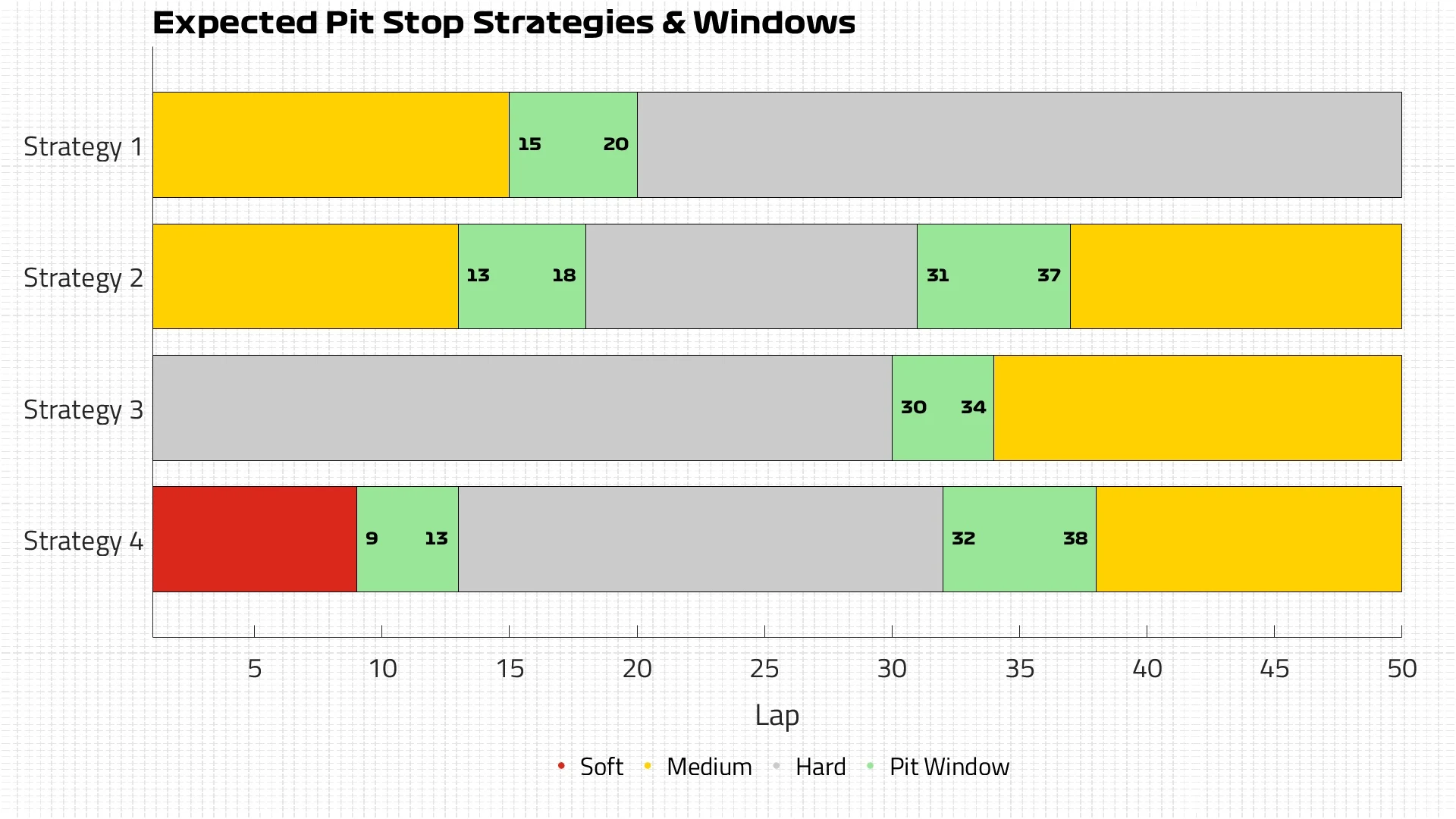
How about a different option for the top 10?
Realistically, being able to choose the starting tyre means those in a points-paying position at the start of the race are unlikely to want to deviate from the best strategy too much, but there are some other strategies that are close in terms of overall race time.
The best of these is a more aggressive two-stop strategy for any drivers that have two pairs of medium tyres available for the race. Everyone except Daniel Ricciardo has that option, and it means they can run a medium-hard-medium strategy with fairly wide pit windows.
READ MORE: Leclerc pledges ‘full attack’ after losing out to ‘exceptional’ Perez pole lap
The first stint is likely to be extended a little to make sure the one-stop remains an option - aiming for the lap 15-20 mark - but a more attacking middle stint on hards would then call for a return to the mediums with anything below 20 laps remaining.
While the whole top ten has two sets of medium tyres in their allocations, George Russell in sixth and Kevin Magnussen in tenth have both, but a few laps on one set, meaning they have one set of new and one used mediums.
Theoretically this strategy could be done in any combination of the three stints but by starting on the hard a frontrunner would likely lose track position to quicker cars on mediums, and and two opening stints on the medium instantly ties them into a two-stop race.
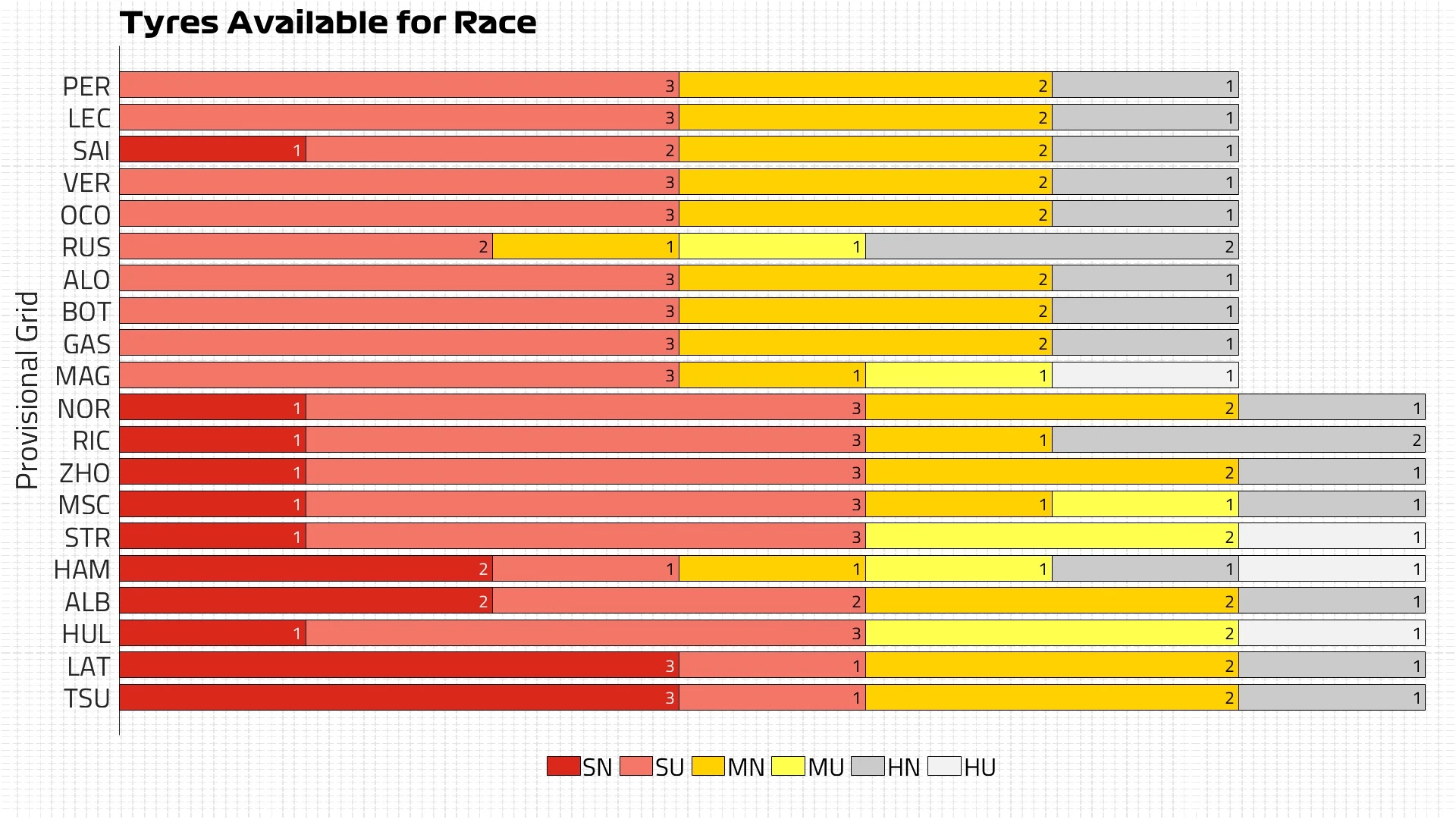
What are the options for the bottom half of the field?
While the hard compound is a risk for anyone starting at the front, a driver such as Lewis Hamilton or Ricciardo who believe they have more potential in their car than their starting position suggests could look to start on the hards.
READ MORE: Hamilton vows to 'give it everything' after shock Q1 exit in Saudi Arabian GP qualifying
Ricciardo originally qualified 12th behind his McLaren team mate Lando Norris, but a three-place grid penalty for impeding Esteban Ocon means he will line-up in 14th place following Mick Schumacher’s withdrawal. Hamilton will be one position behind him in 15th, but a long way adrift of Russell in the other Mercedes after struggling with the handling of his car.
Starting on the hard compound would cost some performance but if the McLaren and Mercedes are already quicker than cars around them then that would be offset by the tyre difference. Then as the opening stint goes on the hard is a more consistent tyre and won’t degrade in the same way the medium will from around lap 12.
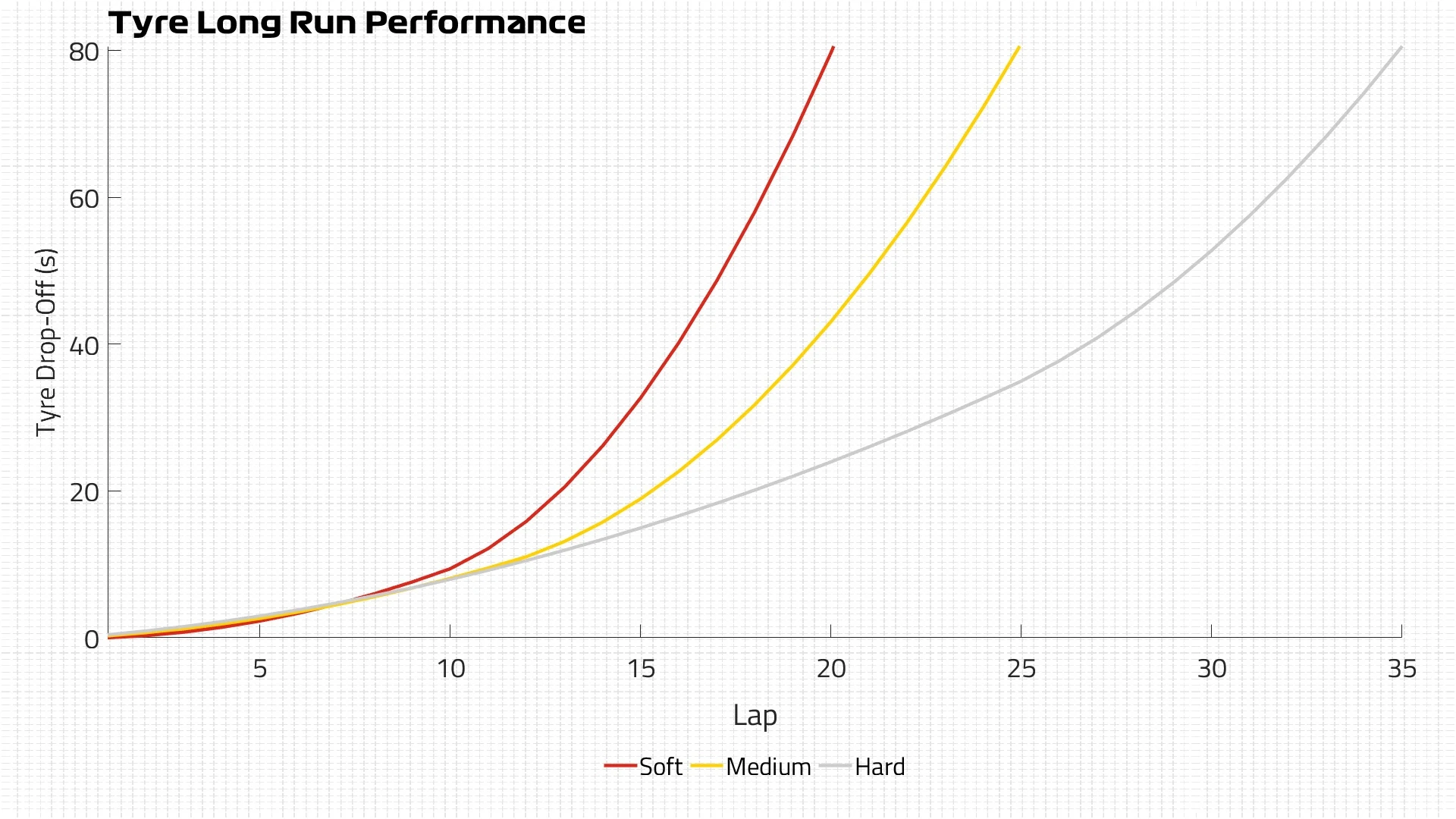
If the race ran normally then the target would be to complete 30-34 laps on the hards before switching to the mediums to run to the end, but the bigger benefit will be felt if there is a Safety Car or red flag. The life of the hard would mean a driver could stay out for the first two-thirds of the race hoping for such an interruption, allowing a free pit stop - or one that costs them 11 seconds rather than 17s under green flag conditions - and gaining them ground.
HIGHLIGHTS: Watch as Sergio Perez makes history in qualifying for the Saudi Arabian GP
There’s another outside option that includes all three compounds, with starting on the soft theoretically possible for a short first stint before switching to the hard around lap 12 and then the medium for the final 18 laps. However, the graining and drop-off as the tyres are worked harder on high fuel would make this strategy a risk, as would conceding track position so early on.
The reverse strategy is more likely, starting on the medium for the first stint and switching to hards, but staying aggressive with the pace and then doing a final stint of less than 15 laps on softs, when the car is at its lightest and the track rubbered-in.
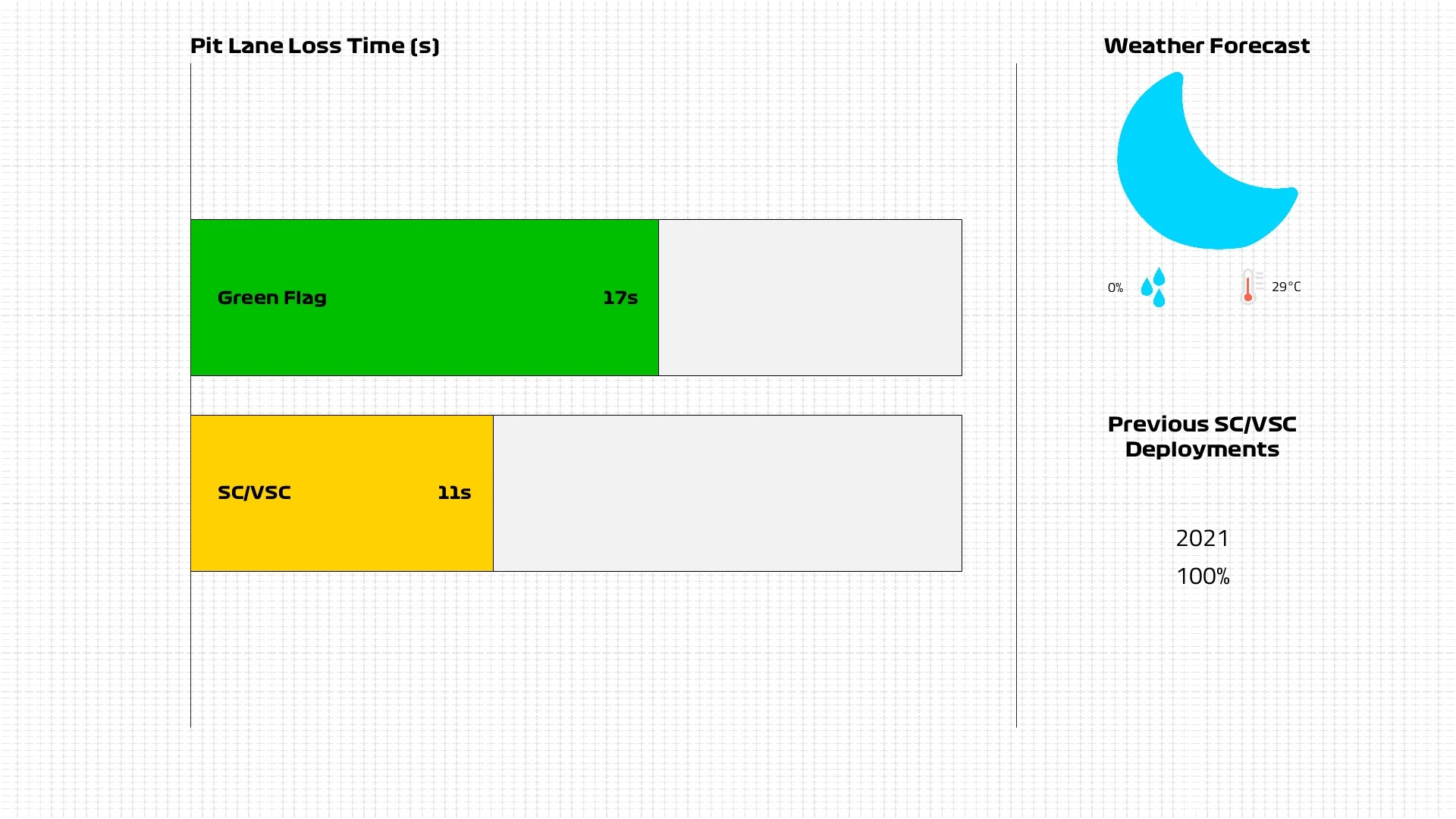
Wait, but what’s the weather doing?
Sunday looks set to be the hottest day of the race weekend, with temperatures exceeding 31C during the day for the first time and staying in the high-20s once the sun sets and the lights go out at 20:00 local time.
The higher temperatures could lead to a little more management needed during the race, but drivers are likely to have a slightly easier time of it given the drop in winds. They have had to deal with some very strong gusts throughout Friday and Saturday but the wind speed is set to be less of a factor on Sunday evening.
Teams also don’t need to worry about tyre warm-up in the same way they did in Bahrain last week despite the later start time, as the first sector puts a lot of energy through the tyres and will see them quickly gain temperature.
READ MORE: Ricciardo penalised three grid places after impeding Ocon in qualifying
Tap here to find out more about F1 TV, including enhanced race coverage, exclusive shows, archive video and more.
Next Up
Related Articles
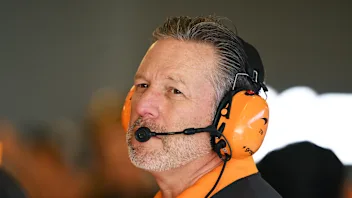 Brown insists McLaren ‘won’t change the way we race’
Brown insists McLaren ‘won’t change the way we race’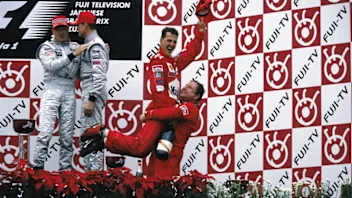 The most iconic recent championship celebrations
The most iconic recent championship celebrations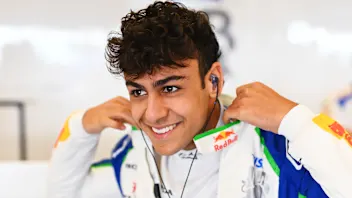 Lindblad's car number confirmed for rookie season
Lindblad's car number confirmed for rookie season Our writers on the best drivers and stories from 2025
Our writers on the best drivers and stories from 2025.webp) Winners & Losers5 Winners and 5 Losers from the 2025 season
Winners & Losers5 Winners and 5 Losers from the 2025 season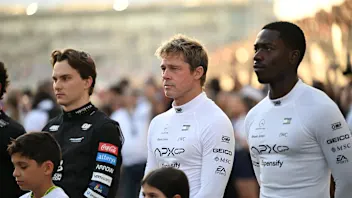 ExclusiveHow APXGP was brought to life by costume designer Julian Day
ExclusiveHow APXGP was brought to life by costume designer Julian Day

